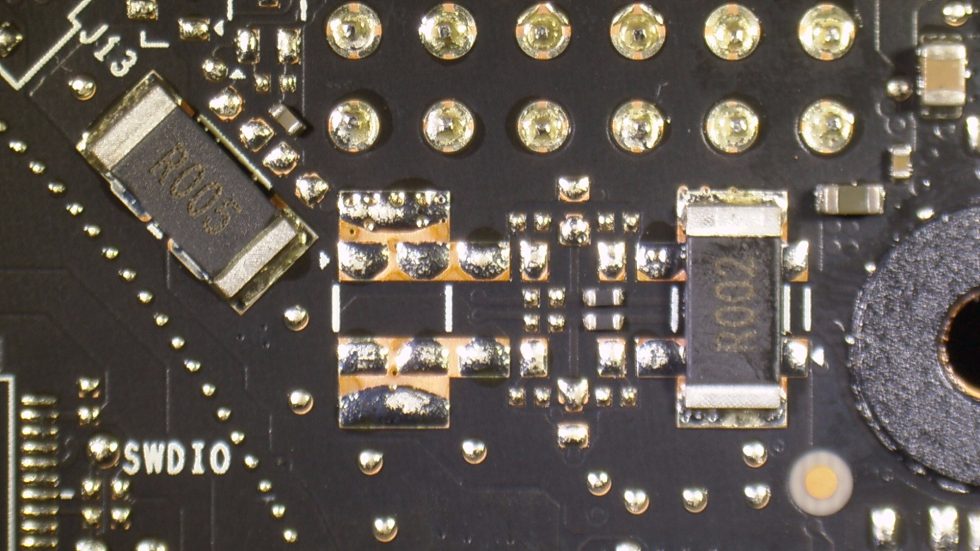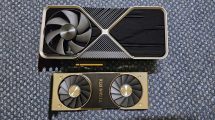Teardown: PCB layout and components
Let’s start with the PCB, the layout of which corresponds 1:1 to the PCB of the recently tested RTX 4070 Ti Super from PNY and even has the same revision number. NVVDD is still the most important voltage here too, resulting in a voltage converter design with a total of 7 real phases and the resulting 7 control loops for NVVDD alone. Compared to the RTX 4070 Super FE, there is no increase, which doesn’t seem necessary in view of the unchanged TDP.
It all looks a bit lean, but we have to get through this first. Once again, separate PWM controllers are used for NVVDD (GPU core) and FBVDDQ (memory), as the top models among the PWM controllers are unfortunately far too expensive. Therefore, the good and well-known uP9512R from UPI Semi, which can only generate 8 phases and is significantly cheaper, has to do the job again. A second PWM controller in the form of the small uP9529 is then used to control the two phases for the memory. Both controllers are located on the back of the board. Directly between them is an NCB 45491 for monitoring the four 12V rails (3x Aux and 1x PEG). So there is no difference at all between the Super and Non-Super.
All DrMOS used, including those for the memory, are rather inexpensive products from OnSemi. The NPC302150 with 50A peak current used in all control circuits for NVVDD and FBVDDQ (memory) integrates a MOSFET driver, a high-side MOSFET and low-side MOSFET in a single package. This chip is specifically designed for high current applications such as DC-DC buck power conversion applications. This integrated solution reduces the footprint on the PCB compared to a solution with discrete components. The coils used for NVVDD and the memory have an inductance of 220 nH, the capacitors are in cup form, which is more favorable.
The 12V rails on the 12 4 12VHPWR connector are combined into a single rail directly after the socket, another is connected to the PEG and is only used slightly for NVVDD. The BIOS is in the usual place and the generation of the remaining extra-low voltages is the same as before. So there are no more special features.
- 1 - Introduction, technical data and technology
- 2 - Test system and measuring equipment
- 3 - Teardown: Disassembling and cooler
- 4 - Teardown: PCB and components
- 5 - Teardown: Material analysis
- 6 - Gaming Performance FHD (1920 x 1080)
- 7 - Gaming-Performance WQHD (2560 x 1440)
- 8 - Gaming Performance Ultra-HD (3840 x 2160)
- 9 - Gaming Performance DLSS & FSR
- 10 - Power consumption and load balancing
- 11 - Transients, capping and PSU recommendation
- 12 - Temperatures, clock rate and tehrmal imaging
- 13 - Fan curves, noise and audio samples
- 14 - Summary and conclusion











































64 Antworten
Kommentar
Lade neue Kommentare
Urgestein
Veteran
Urgestein
Urgestein
Urgestein
Urgestein
Urgestein
Urgestein
Urgestein
Urgestein
Urgestein
Urgestein
Urgestein
Veteran
Mitglied
Alle Kommentare lesen unter igor´sLAB Community →